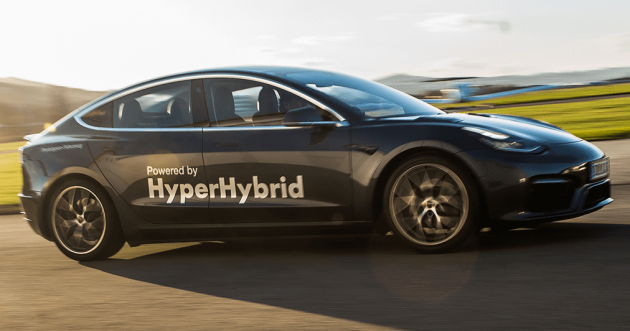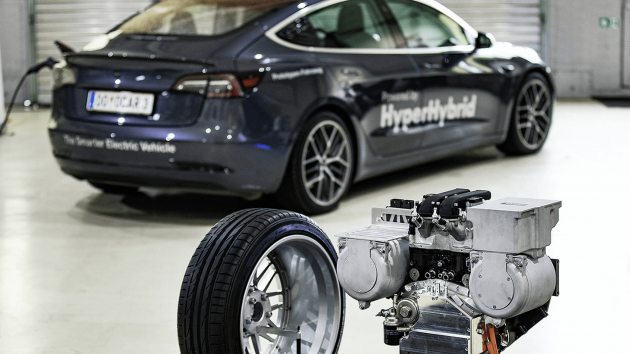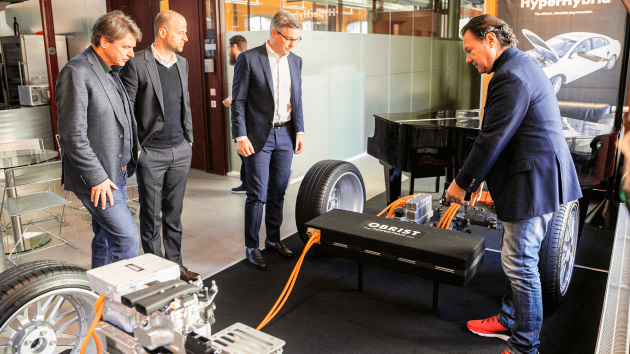We all know that the future is very much electric. With ever larger batteries and faster charging technologies, range anxiety is becoming less and less of an issue. But long-range electric vehicles are expensive to make, and the charging infrastructure is patchy at best – especially in developing countries.
Austrian engineering firm Obrist has come up with a range-extended electric vehicle powertrain that it believes solves the problem. The HyperHybrid replaces the large and heavy EV battery with a smaller unit, plus an efficient 1.0 litre two-cylinder petrol engine that is claimed to meet new Euro 7 emissions regulations.
Range extenders are usually conceived as an afterthought (the one previously used on the BMW i3 was a two-cylinder scooter engine, for example) and tend to run rough as a result, ruining the illusion of silence and serenity of an electric motor.
Since the petrol generator doesn’t actually power the car, Obrist’s solution is to put the cylinders side-by-side, effectively creating two single-cylinder engines with counter-rotating crankshafts to balance each other out. A cloverleaf-shaped linear mass spring, an inertia-compensating flywheel and a damped gear set further reduce vibrations, while a steel case isolates the noise and heat of the engine from the outside.
The result is a two-pot mill that the company says generates lower noise, vibration and harshness (NVH) than a V12. It is also claimed to deliver an energy efficiency figure of 50%, compared to 40% for the current Toyota Prius‘ 1.8 litre Atkinson-cycle four-pot.
Obrist says that the engine is capable of a combined fuel consumption figure of 3.3 litres per 100 km, and when powered by synthetic methanol and petrol from aFuel, the world’s first climate-positive energy carrier, the HyperHybrid is even claimed to produce negative carbon dioxide emissions of -24 grams per kilometre.
Two variants of the HyperHybrid are being proposed. The standard model comes with a 100 kW (134 hp) electric motor, a 40 kW (54 hp) petrol engine and a 17.3 kWh lithium-ion battery. A High Performance version switches that up to a 200 kW (268 hp) motor, a 90 kW (121 hp) turbocharged mill and a 25.9 kWh battery.
Obrist has created a number of demonstrator vehicles, including one based on the Tesla Model 3 (another prototype, built on the Model Y, is on display at the ongoing Munich Motor Show). The company did not say if it had the standard or High Performance engine but did say that it was capable of an NEDC-rated fuel consumption figure of 0.97 litres per 100 km (2.01 litres per 100 km in the real world), CO2 emissions of 23 grams per kilometre and an all-electric range of 96 km on the WLTP cycle.



